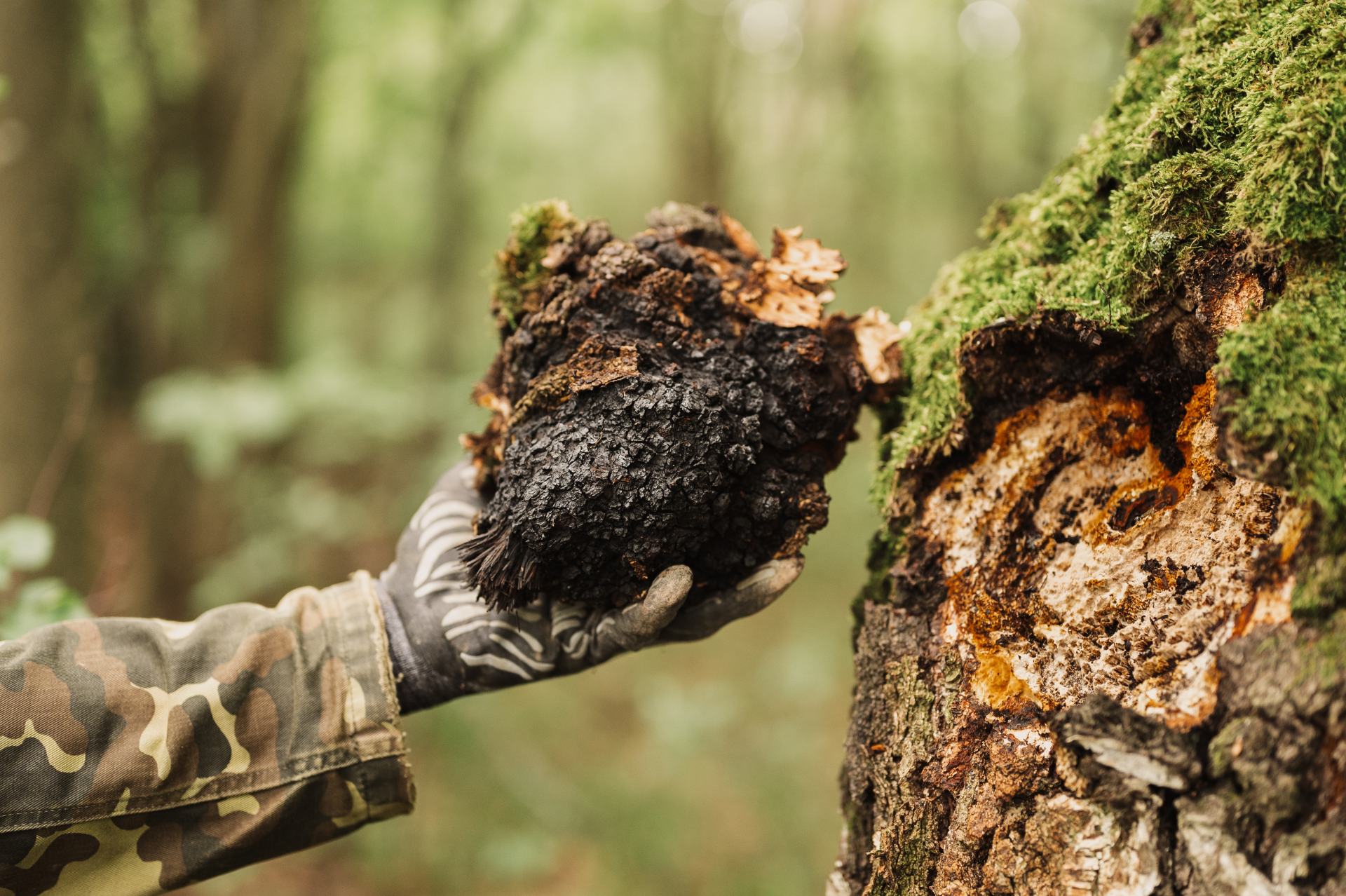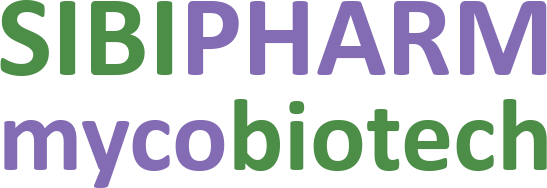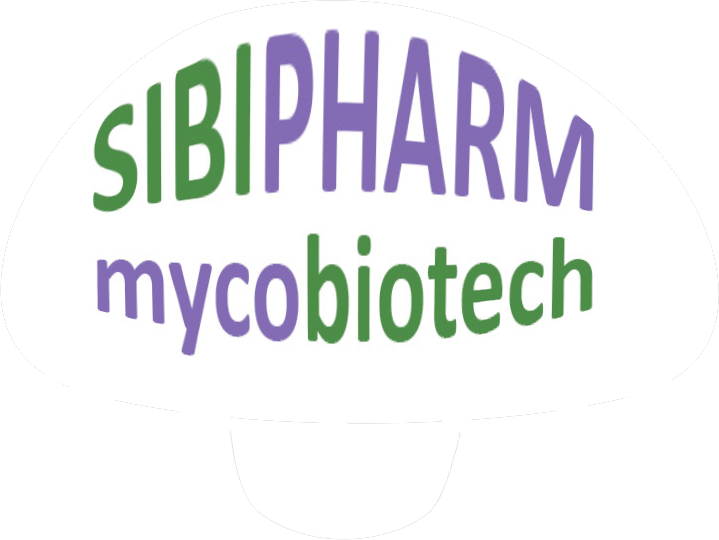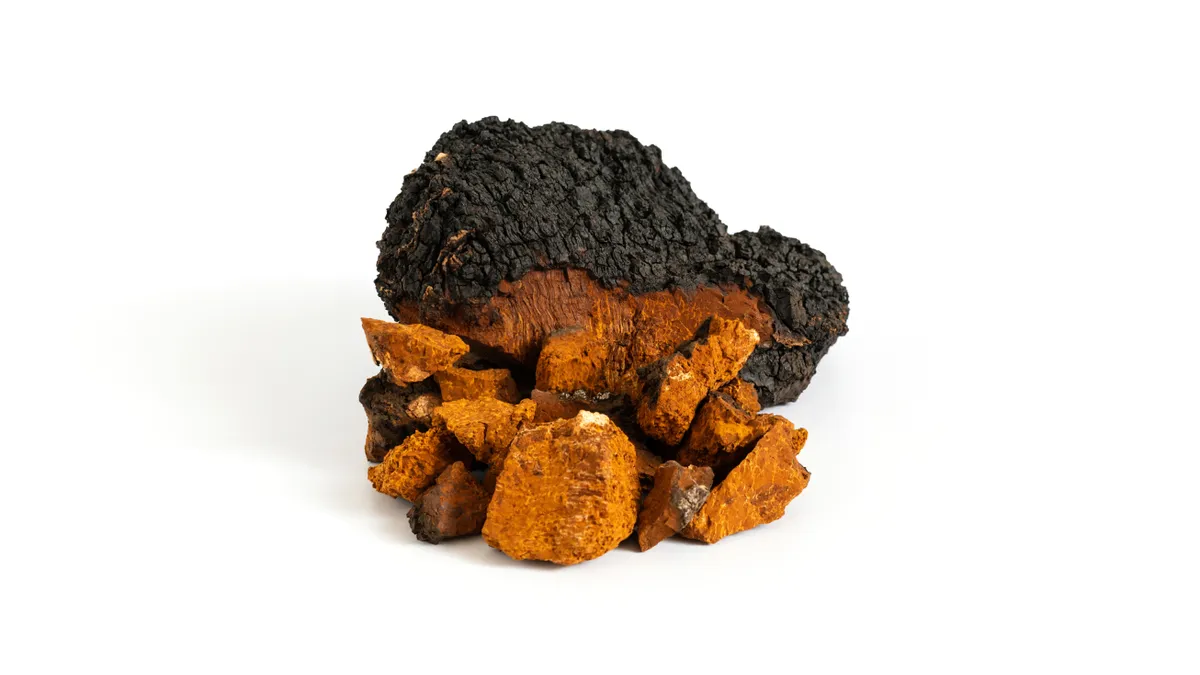Latin name: inonotus obliquus
Chaga’s uses:
- Strengthening the immune system
- Antioxidant protection of the body
- Support of the cardiovascular system
- Prevention of cancer
- Reducing inflammation
- Regulating blood sugar levels
- Improving liver function
- Increasing energy levels
- Fighting stress and anxiety
- Supporting skin health
Chaga mushroom description
Chaga mushroom (Inonotus obliquus) is a parasitic fungus that grows primarily on birch trees in the northern regions of Europe, Asia and North America. Externally, it is a black, charred mass of irregular shape, similar to a coal growth or charcoal. Inside, the mushroom has a softer and lighter brown texture. Chaga is often found in cold-climate forests, where it prefers to grow on birch trees, less often on other trees such as alder or rowan. The main areas of its distribution are Russia, Finland, Canada and the USA.
The fungus forms in places where the tree is damaged and can develop for decades, gradually destroying the host tree. Chaga is most common on old birch trees growing in untouched forests, where conditions allow the fungus to grow slowly and accumulate bioactive compounds. Chaga can be collected all year round, but preference is given to the winter period, when the concentration of nutrients in the fungus is maximum.
History of the use of the Chaga mushroom
Chaga has long been used in the folk medicine of northern peoples. The first mentions of the use of this mushroom are found in ancient texts of Chinese medicine, where it was valued as a powerful means of strengthening health. In Eastern medicine, Chaga is known as the “mushroom of immortality”. It was used to treat various diseases, ranging from colds to tumors.

In China and Siberia, Chaga was used as a decoction to improve immunity and fight chronic diseases. In the middle of the 20th century, Chaga attracted the attention of scientists, and they began to actively study it. Modern research has confirmed the presence of unique bioactive substances in Chaga, which have antitumor, anti-inflammatory and immunomodulatory properties. In the folklore of northern peoples, Chaga was attributed magical properties, believing that it was able to protect against evil spirits and bring longevity. In the 1950s, oncologist Professor Sergei Lazurin first documented the positive effect of Chaga on the health of patients with cancer. Today, the mushroom is actively used in both traditional and alternative medicine.
Active substances in the Chaga mushroom
The Chaga mushroom is rich in various bioactive compounds, which determine its medicinal properties. Among the main active components are polysaccharides, which have powerful immunomodulatory and antioxidant properties. These compounds promote the activation of macrophages, enhancing the body’s immune response to infections and inflammatory processes.
Another important class of substances is betulin and its derivatives, which the mushroom absorbs from birch bark. Betulin exhibits antitumor activity, inhibiting the growth of malignant cells and promoting apoptosis. Triterpenoids contained in Chaga also have antiviral and hepatoprotective activity, helping to protect liver cells from damage.
Polyphenols, including melanin, give the mushroom strong antioxidant properties that protect the body’s cells from oxidative stress. This natural melanin is also involved in protecting DNA from mutations caused by free radicals. Phenolic compounds of Chaga, such as lignin and gallic acid, demonstrate anti-inflammatory and antimicrobial properties, helping to fight infections.
The mushroom also contains sterols, such as inododiol and lanosterol, which regulate blood cholesterol levels, help strengthen the walls of blood vessels and improve blood circulation. Phytoncides in Chaga have an antiseptic effect, inhibiting the growth of pathogenic microorganisms.
Flavonoids found in Chaga improve metabolism and have a vasodilatory effect, which has a positive effect on the cardiovascular system. Amino acids, B vitamins and trace elements such as zinc, copper and selenium contribute to the overall strengthening of the body, support energy metabolism and improve skin condition.
Chaga mushroom and biohacking.
For a biohacker, Chaga mushroom is a unique natural tool for improving health and increasing productivity. Its regular use helps to strengthen the immune system, which is especially important for people striving for high physical and mental activity. Chaga’s antioxidant properties help protect the body’s cells from free radical damage, slowing down the aging process and maintaining high cognitive function.
Chaga also supports the cardiovascular system, helping to lower cholesterol and improve blood circulation. This is important for biohackers who are looking to improve endurance and optimize physical activity. Chaga’s anti-inflammatory properties help control inflammation, which is especially useful during high-intensity training or under stress.
Regular consumption of Chaga can help normalize blood sugar levels, which helps maintain a stable energy balance and avoid sudden drops in productivity. The hepatoprotective properties of the mushroom protect the liver from toxins, which is especially important for biohackers who use various diets and supplements.
Chaga helps improve the quality of sleep and reduce anxiety, which directly affects the recovery and overall health of the body. Due to the presence of melanin and other active compounds, Chaga helps maintain healthy skin, making it more resistant to external influences and slowing down the aging process. Additionally, Chaga can be used as an adaptogen, helping the body cope better with physical and emotional stress, which is a key factor for biohackers looking to improve their life efficiency. Overall, regular Chaga consumption allows a biohacker to not only maintain high physical fitness, but also improve cognitive abilities, contributing to a more productive and healthy life.
Disclaimer:
The information provided in this article is for educational and informational purposes only. It is not intended as a substitute for professional medical advice, diagnosis, or treatment. Never disregard professional medical opinion and consult with a specialist.
Scientific articles:
- Chaga mushroom: a super-fungus with countless facets and untapped potential.
Fordjour E, Manful CF, Javed R, Galagedara LW, Cuss CW, Cheema M, Thomas R.
https://pubmed.ncbi.nlm.nih.gov/38116085/
- Therapeutic properties of Inonotus obliquus (Chaga mushroom): A review.
Ern PTY, Quan TY, Yee FS, Yin ACY.
https://pubmed.ncbi.nlm.nih.gov/38813471/
- Chaga ( Inonotus obliquus), a Future Potential Medicinal Fungus in Oncology? A Chemical Study and a Comparison of the Cytotoxicity Against Human Lung Adenocarcinoma Cells (A549) and Human Bronchial Epithelial Cells (BEAS-2B).
Géry A, Dubreule C, André V, Rioult JP, Bouchart V, Heutte N, Eldin de Pécoulas P, Krivomaz T, Garon D.
https://pubmed.ncbi.nlm.nih.gov/29484963/
- Chaga mushroom extract suppresses oral cancer cell growth via inhibition of energy metabolism.
Yeo D, Yun YG, Shin SJ, Dashnyam K, Khurelbaatar A, Lee JH, Kim HW.
https://pubmed.ncbi.nlm.nih.gov/38720012/
- Recent Developments in Inonotus obliquus (Chaga mushroom) Polysaccharides: Isolation, Structural Characteristics, Biological Activities and Application.
Lu Y, Jia Y, Xue Z, Li N, Liu J, Chen H.






